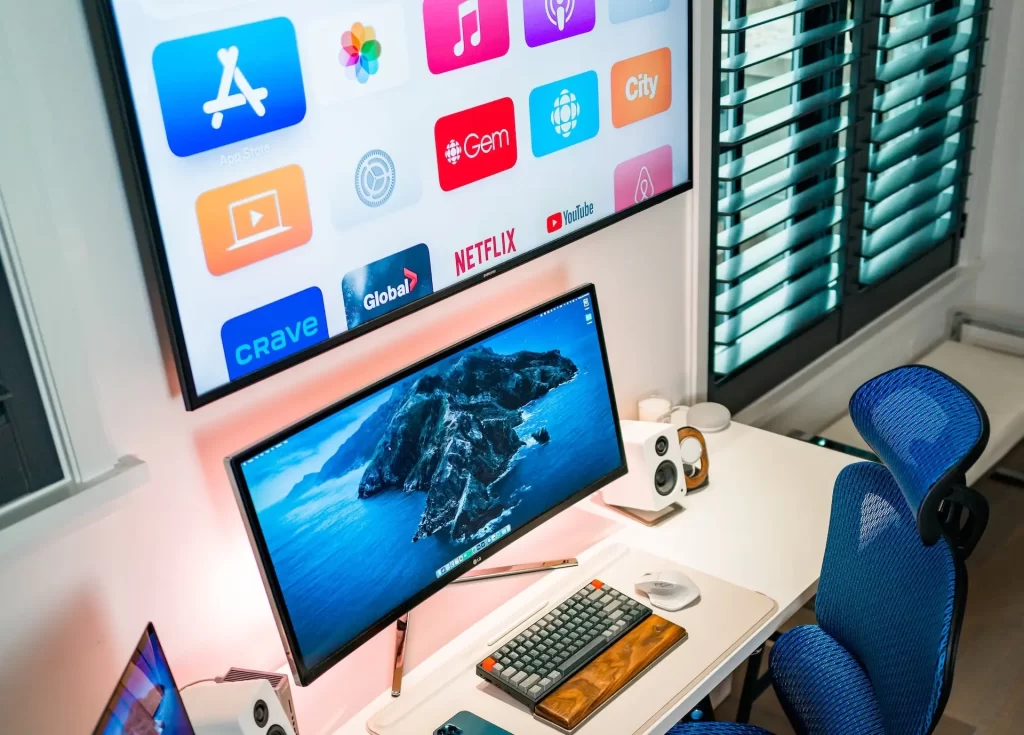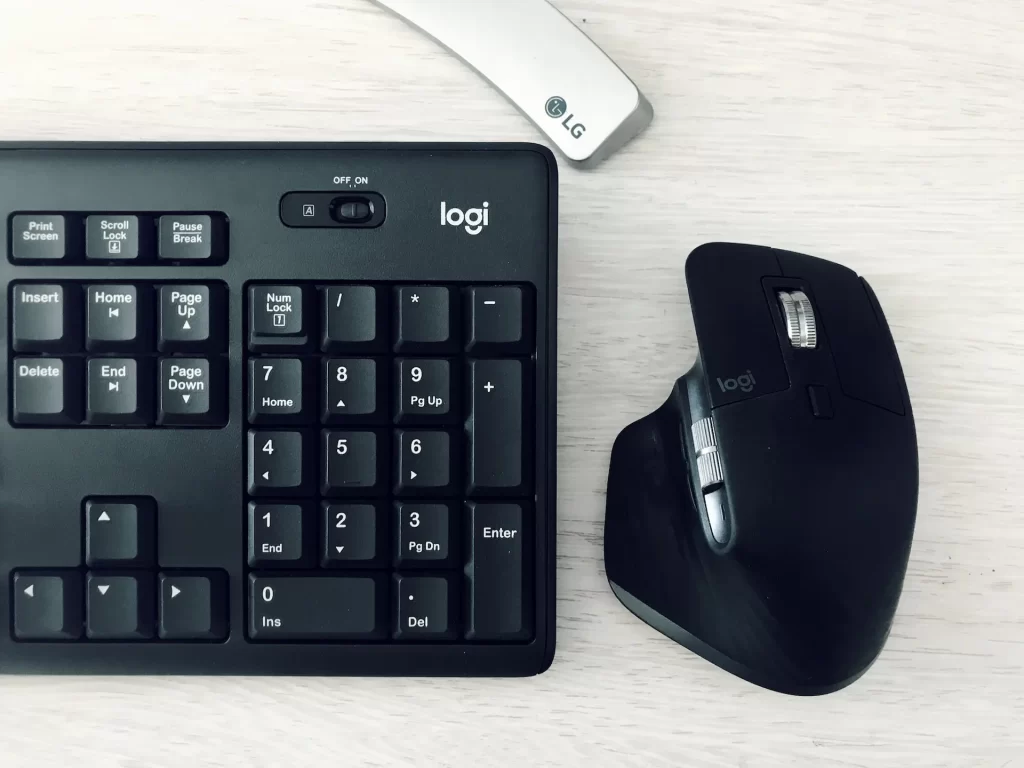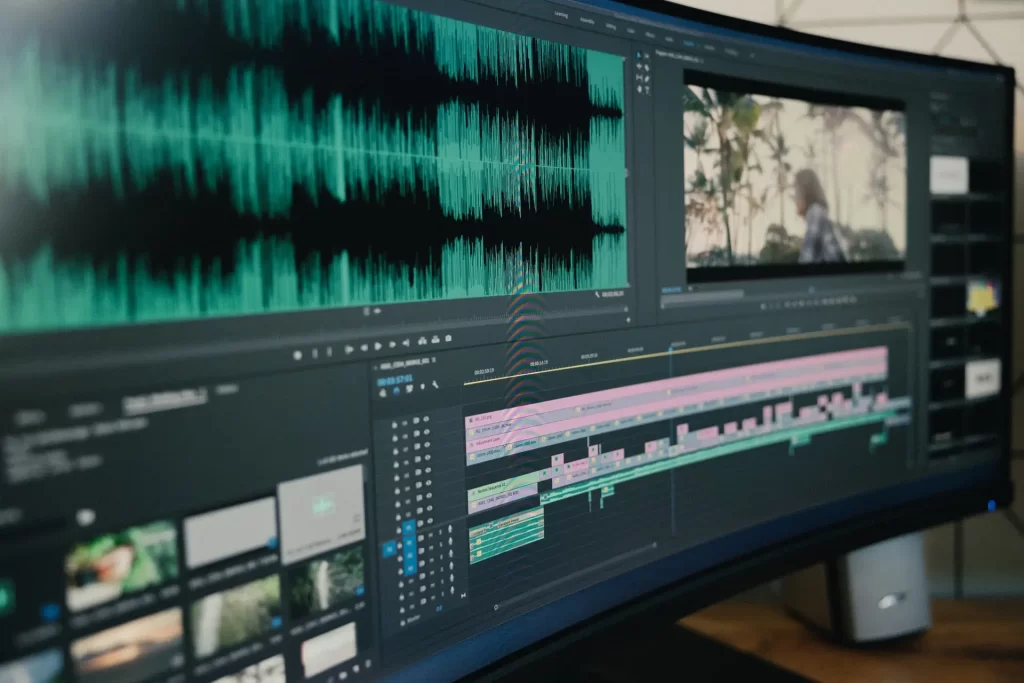
When it comes to your home workspace, we talk a lot about maximizing productivity by making use of multiple screens (e.g. laptop, monitor, phone) to get things done. TVs are a tricky type of screen to include. If you are not careful, TVs can cause more detriment to your home workspace than good.
A TV monitor is enticing for numerous reasons:
- First, it is larger, cheaper, and can give you more vertical space for multitasking – something that a monitor can’t.
- Second, you may be tempted to maximize the potential of all devices and screens in your home, which includes your otherwise idle TV.
- Third, perhaps if you use your TV as a second screen to display reference material for your main tasks, you will be less tempted to use it for movies, gaming, or browsing the internet.
With a little tech savviness, you can turn your TV into a monitor, in other words, a second screen that extends the workspace beyond your small laptop screen or computer monitor. But are TVs better for productivity than regular monitors?
A TV is less compatible with digital work as it produces images and text that are more blurry, compared to a monitor of the same resolution. This is because TVs are larger, so they fit fewer pixels per inch. Also, a monitor has lower input lag for responsive mouse and keyboard operation than a TV.
There are some valid reasons to continue using TVs – as long as you are using the right type of TVs. Let’s quickly dive into the differences.
Can you use TV as a monitor for work?
To use a TV as a monitor, you can connect your PC or laptop to the TV using an HDMI cable, or set up wireless screen mirroring to duplicate your computer screen on your TV. However, you will need a 4K TV (rather than HDTV) which will give you higher resolution for viewing text and images clearly.
Benefits and disadvantages
Using a TV has several benefits. The biggest benefit is likely the multitasking potential that comes with its large screen.
We are not just talking about the width of a TV; a TV also gives a lot of vertical viewing space that is lacking in laptop or monitor screens. So the large screen can be really useful. You may work in a profession that requires you to view multiple apps concurrently, in order to get tasks done. On a TV, you can easily display 4-6 apps at a time or more, organized into two rows each stacking 2-4 programs.
Not to mention, a TV is relatively inexpensive compared to a monitor. So if you are someone who needs a lot of screen real estate, you may consider using a TV instead of using multiple monitors.
Seriously, you may prefer a 40- or 50- inch TV over an ultrawide monitor or 2-3 monitors (ranging from 19-27 inches each). It might give your desk a cleaner look.
But you should beware of the disadvantages of a TV and be sure to mitigate them.
The disadvantages of using a TV as a monitor are as follows:
- Fuzzier images and text: Most TVs are not designed for up close viewing, and they pack less pixels per inch than computer monitors
- Increased input lag
- Lower refresh rates: TVs are limited to 60Hz or 120Hz, while monitors can go up to 400 Hz
- Less than optimal color reproduction
- Lack of curve: The lack of curve in TVs is noticeable and makes reading text on the sides harder (unlike ultrawide monitors)
- Increased odds of neck or shoulder discomfort: You may physically have to turn your head to view things at the edge of the TV screen.
- Increased risk of eye strain
- Larger desk space required: A TV is way larger than a regular monitor, so you need a large desk, both in terms of width and depth.
- May require additional tools like a keyboard tray: Placing your keyboard and mouse on a sliding keyboard tray attached beneath your desk helps you to sit further away, while using your TV.
Let’s compare the first 4 factors, so that you know what to look for – if you truly want to make use of a TV monitor.
The other factors are related to the ergonomics of setting up your TV workspace – you need to mitigate these disadvantages by taking the extra effort to set up your TV workspace correctly.
Why monitors are generally better than TVs for work
The first issue that comes up when using a TV as a monitor is screen resolution. Screen resolution is the number of pixels a screen has horizontally and vertically. It is generally written as 1024 x 768 or 1920 x 1080 – this indicates that the screen has 1024 pixels horizontally and 768 pixels vertically, or 1920 pixels horizontally and 1080 pixels vertically.
For a monitor 27 inches and below, a full HD resolution of 1080p (1920 x 1080) is common, and it works fine for most use cases.
However, an HD TV with a 1080p resolution will fare a lot worse than a monitor of the same resolution. Since the TV has a wider and larger screen, there are less pixels per inch on the TV screen (the pixels become more spaced out), compared to a monitor of the same resolution. Thus, the images and texts are fuzzier and harder to read on a TV.
In this regard, a 43-inch TV will do way worse than a 27-inch monitor, when both of their screen resolutions are 1080p.
Don’t forget that monitors are designed for close up use. TVs aren’t. You do not need fine, close-up detail, when viewing your TV casually across the room.

The second main issue is input lag. Since monitors are designed for computer work, they have no issue responding immediately to any inputs from your keyboard and mouse. But on a TV screen, you may observe a lag when you move your mouse or type. This is a common issue that makes your TV less usable as a monitor.
Two other factors are worth mentioning: color reproduction and refresh rates.
The color output on monitors is better as monitors are designed to display colors correctly. If you plan to use your large-screen TV for color-intensive tasks such as video editing or design work, your standard HD TV will likely fail to suffice.
In terms of refresh rates, TVs offer either one of two refresh rates – 60 Hz or 120 Hz, while monitors can go up to 144 Hz, 240 Hz, or more. So monitors remain the better option if you need to work on highly visual tasks that require an extremely smooth-looking screen.
Exception: 4K TVs
If you are planning to use a TV as your monitor on a regular basis, the type of TV you should be getting is a 4K TV, also known as Ultra High Definition (UHD) TV.
The larger the display, the higher the screen resolution needed, in order to pack enough pixels per inch for viewing up close. For this reason, full HD resolution (1920×1080) is inadequate. On the other hand, 4K is a screen resolution that has 4 times the pixel count of full HD displays.
On 4K TVs, the higher resolution makes text and images sharper, so it is way easier to read them close-up. 4K is great for any display around 43 inches and below.
4K TVs have thus become somewhat of a popular display in people’s home offices. It is versatile. Besides seriously multitasking and getting things done, you can use it to relax by watching movies, videos, and console gaming – so it can provide a variety of use cases on just one device. Pretty minimalistic.
But why not get an ultrawide monitor instead?

As mentioned earlier, a TV has a lot more vertical viewing space than an ultrawide monitor. For instance, a 42-inch 4K TV comes with more vertical screen space (height) than horizontal screen space (width), when compared to a 42-inch ultrawide monitor.
There is an argument that the extra horizontal space from an ultrawide monitor will go to waste, unless you specifically work with apps and programs that will span the entire length of your screen.
At this point, it is up to personal preference and how you utilize your screen.
So, who uses ultrawide monitors? Programmers, video editors, and generally anyone who requires such expansive, horizontal layouts. These are very specific professions and use cases.

In contrast, the vertical screen space of a TV is arguably more usable. On a TV, you can “stack” your windows and apps on top of one another – a benefit that is less practical on any laptop or monitor. Thus, it is easier to put the extra screen height to good use, instead of feeling like you are managing the details sitting at your screen’s left/right edges.
This article was originally published on unboundist.com. If it is now published on any other site, it was done without permission from the copyright owner.
Summary
It is more straightforward to improve your productivity using multiple monitors than utilizing a TV – here is a guide for finding out the right number of monitors/screens for you and how to set them up. What is your workflow and what apps would you use?
Also consider the ways to select the monitors you want and how to set them up on your desk, taking into account your monitor’s size, resolution, ergonomics, and the type of layout you want.
Ultimately, if you would like to add a TV to your workspace, go with a 4K TV. Anything that you use daily deserves to be the highest quality tool you can afford. This has ramifications on your productivity and health so it is not wise to make do with a lower-resolution screen. If you are in doubt, read this article to find out more.